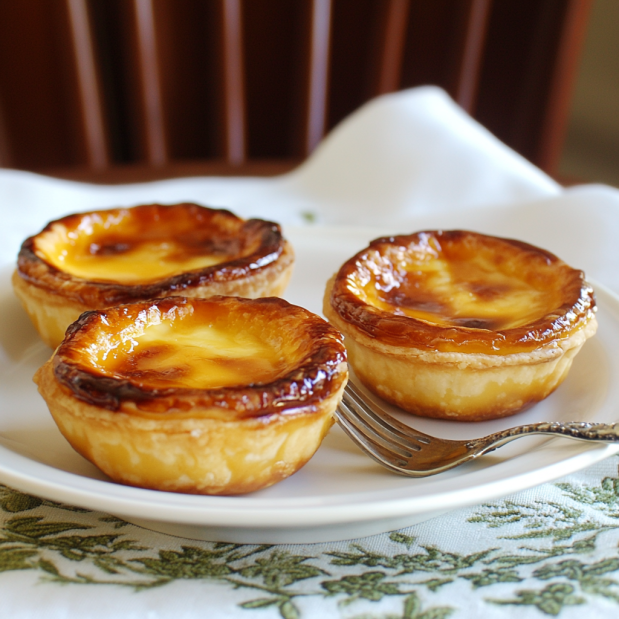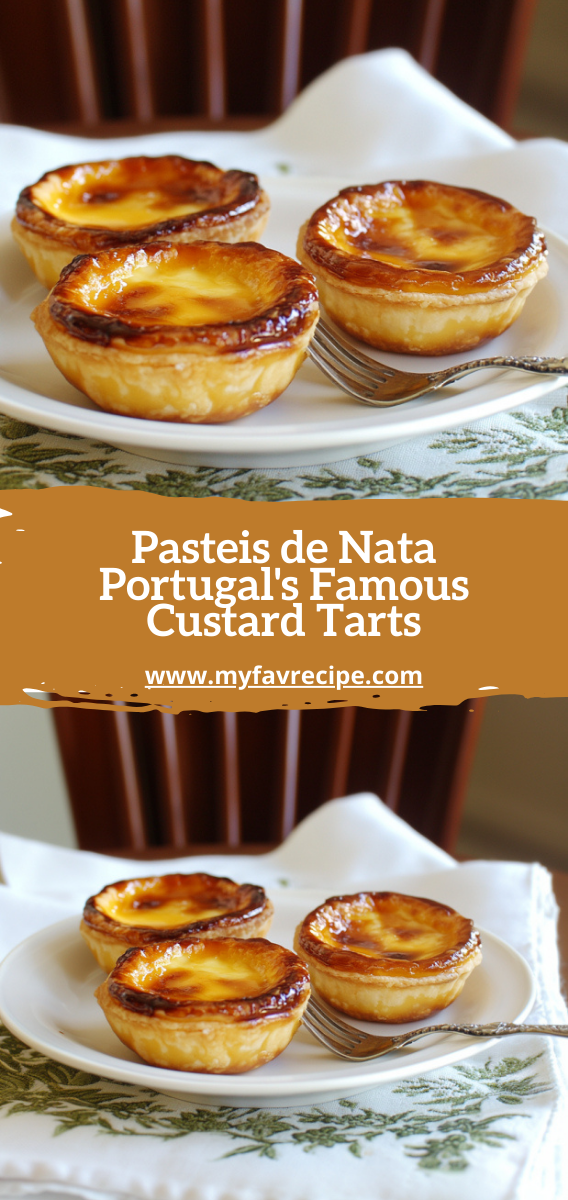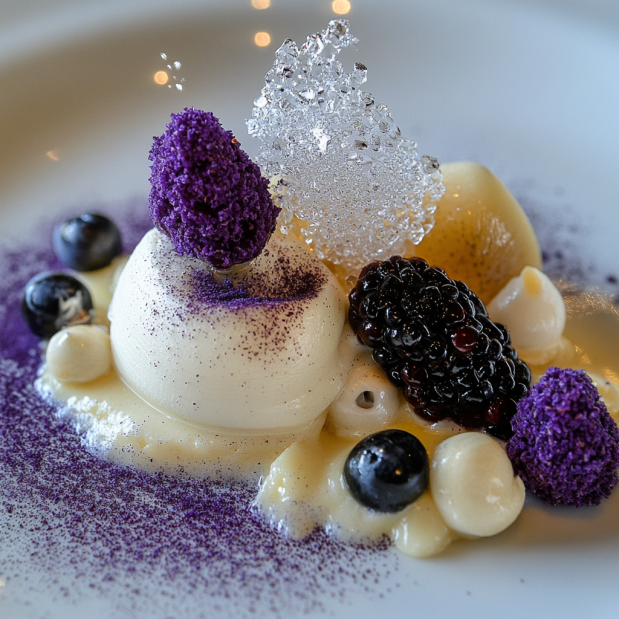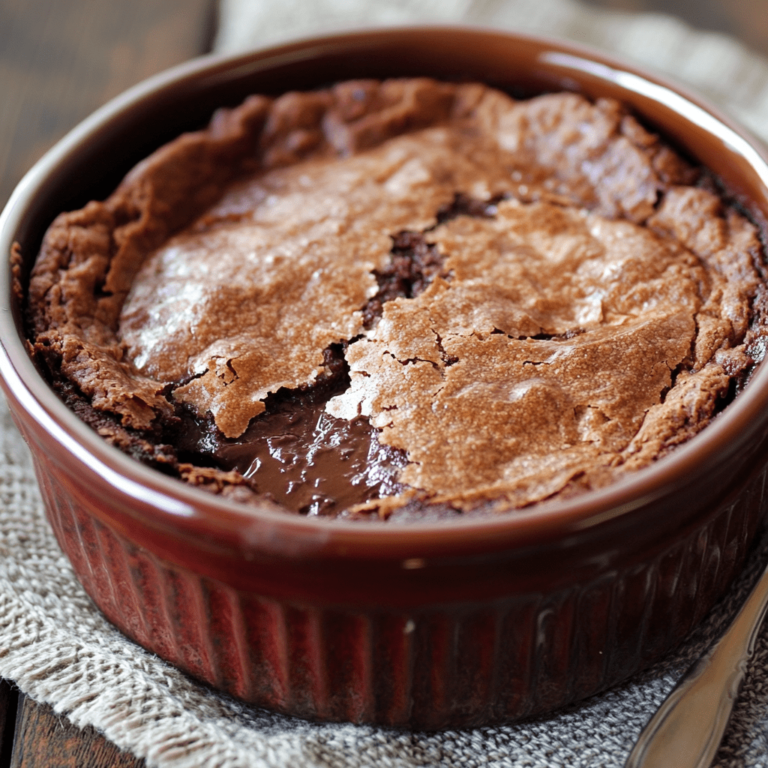Pasteis de Nata Portugal’s Famous Custard Tarts
Imagine a delicate pastry that captures the heart of Portuguese culinary tradition: the beloved pasteis de nata. These Portuguese egg tarts are more than just a dessert—they’re an edible piece of cultural heritage that has charmed taste buds around the world.
Originating in Lisbon, these custard tarts feature a crisp, flaky exterior and a silky smooth egg custard filling that melts in your mouth. Each bite tells a story of centuries-old baking techniques passed down through generations of Portuguese bakers.

The magic of pasteis de nata lies in their simplicity. With just a few quality ingredients, these small Portuguese egg tarts transform into an extraordinary culinary experience that represents the soul of Portuguese gastronomy.
From street cafes in Lisbon to international bakeries, these custard tarts have become a global sensation. They prove that sometimes the most straightforward recipes are the most unforgettable.
The Rich History of Pasteis de Nata: From Monastery to Modern Icon
The tale of Lisbon pastries starts in the Jerónimos Monastery in Belém. These tasty traditional Portuguese desserts have a story that fascinates food lovers everywhere.
The Secret Recipe from Belem’s Monastery
In the 18th century, monks at the monastery had a problem. They used egg whites for starching clothes, leaving them with egg yolks. This led to the creation of the pastel de belem, a creamy custard tart that became a national treasure.
“Necessity is the mother of invention, especially in culinary arts.”
How These Custard Tarts Became Portugal’s National Treasure
The monks’ secret recipe was sold to a nearby sugar refinery. In 1837, the famous Pastéis de Belém bakery opened. They introduced these magical belem pastries to the world. Their unique taste and crisp, flaky crust won Portugal’s heart.
- Originated in Jerónimos Monastery
- Created from leftover egg yolks
- Sold to local sugar refinery in early 19th century
Evolution of Traditional Portuguese Desserts
Pasteis de Nata are more than a sweet treat. They show Portuguese culinary creativity, turning simple ingredients into an amazing dessert. From monastery kitchens to global cafes, these custard tarts continue to delight food lovers everywhere.
Recipe card
Bringing the magic of Portuguese bakeries into your kitchen is easier than you might think. With the right technique, you can make delicious flaky pastry cups. They’re filled with creamy egg custard that rivals Lisbon’s best cafes.
Essential Equipment
- Tart molds or mini muffin tin
- Rolling pin
- Mixing bowls
- Whisk
- Pastry brush
- Baking sheet
Ingredients for Flaky Pastry Cups
- 2 cups all-purpose flour
- 1/2 teaspoon salt
- 1 cup cold unsalted butter
- 1/2 cup ice water
Ingredients for Creamy Egg Custard Filling
- 1 cup whole milk
- 3 egg yolks
- 1/3 cup sugar
- 2 tablespoons cornstarch
- 1 teaspoon vanilla extract
Step-by-Step Instructions
- Prepare the pastry dough by cutting cold butter into flour
- Gradually add ice water until dough forms
- Chill dough for 1 hour
- Roll out thin and cut into small circles
- Press dough into tart molds
- Whisk custard ingredients until smooth
- Pour filling into prepared pastry cups
- Bake at 475°F for 12-15 minutes

Pro tip: The secret to authentic pasteis de nata is a super-hot oven. It creates those characteristic caramelized spots on top of your creamy egg custard filling.
How to Recognize an Authentic Portuguese Custard Tart
Finding real lisbon pastries needs a sharp eye and a grasp of old-school skills. The best cinnamon-dusted treats show off in unique ways, making them stand out from usual sweets.
True Pastel de Nata shows its real self in several key ways:
- A crisp, wafer-thin pastry shell that breaks easily when you bite into it
- Smooth, rich custard with a bright yellow color
- A slightly burnt caramelized top with dark brown spots
- A light sprinkle of cinnamon and powdered sugar
The texture is key in spotting real Portuguese custard tarts. A genuine Pastel de Nata has a creamy inside that contrasts with its crunchy outside. When looking for authentic lisbon pastries, find bakeries that focus on traditional ways.
“The magic of a perfect Pastel de Nata lies in its imperfect, rustic appearance,” says Portuguese pastry chef Maria Santos.
Outside Portugal, look for bakeries with Portuguese ties or European pastry shops. These cinnamon-dusted treats need exact technique and top-notch ingredients to truly capture their original taste.
- Look for handmade, uneven edges
- Check if they were baked recently
- Ask about their traditional making methods
Learning to spot authentic Portuguese custard tarts turns a simple dessert into a journey of flavors.
Conclusion
Pasteis de nata are more than just a dessert. They tell a story of culture, skill, and new ideas in food. From their start in Lisbon’s monasteries to their fame around the world, they show Portugal’s deep love for food.
People from all over want to try these tarts. They enjoy them in Lisbon’s bakeries or make them at home. Each tart is a mix of flaky pastry and creamy filling, loved by many.
Exploring pasteis de nata is about more than a recipe. It’s about valuing a cultural gem. Every bite is a piece of history, showing the hard work and pride in Portuguese cooking.
These tarts inspire both chefs and home cooks. They remind us that food is about stories, traditions, and sharing joy.
FAQ
What exactly are Pasteis de Nata?
Pasteis de Nata are traditional Portuguese custard tarts. They have a crispy, flaky pastry shell filled with creamy egg custard. The top is caramelized, making them a beloved treat worldwide.
Where did Pasteis de Nata originally come from?
These iconic tarts were first made by monks at the Jerónimos Monastery in Belem, Lisbon. The monastery sold the secret recipe to a nearby sugar refinery. This led to the famous Pastéis de Belém bakery opening in 1837.
How are Pasteis de Nata different from other custard tarts?
Pasteis de Nata stand out with their thin, crispy pastry and caramelized top. Their custard is lighter and more delicate. They’re served warm, often with cinnamon and powdered sugar, giving them a unique flavor.
Can I make Pasteis de Nata at home?
Yes, you can make them at home! It might take some practice, but it’s doable. The key is to make a super-thin pastry and get the custard right. Many recipes can guide you through the process.
Where are the best places to try authentic Pasteis de Nata?
The best place is Pastéis de Belém bakery in Lisbon. But, you can also find great ones in local bakeries across Portugal. Many pastry shops and cafes specialize in these treats.
Are Pasteis de Nata served hot or cold?
They’re traditionally served warm. This makes their flavor and texture better. Enjoying them warm with a cup of Portuguese coffee is a favorite among locals and tourists.
Do Pasteis de Nata contain any special ingredients?
The classic recipe is simple, with eggs, milk, sugar, and flour. The secret is in the preparation and the thin pastry shell. Some recipes might add vanilla or lemon zest for extra flavor.

Portuguese culinary tradition
Equipment
- Tart molds or mini muffin tin
- Rolling Pin
- Mixing bowls
- Whisk
- Pastry brush
- Baking sheet
Ingredients
- Ingredients for Flaky Pastry Cups
- 2 cups all-purpose flour
- 1/2 teaspoon salt
- 1 cup cold unsalted butter
- 1/2 cup ice water
- Ingredients for Creamy Egg Custard Filling
- 1 cup whole milk
- 3 egg yolks
- 1/3 cup sugar
- 2 tablespoons cornstarch
- 1 teaspoon vanilla extract
Instructions
- Prepare the pastry dough by cutting cold butter into flour
- Gradually add ice water until dough forms
- Chill dough for 1 hour
- Roll out thin and cut into small circles
- Press dough into tart molds
- Whisk custard ingredients until smooth
- Pour filling into prepared pastry cups
- Bake at 475°F for 12-15 minutes







